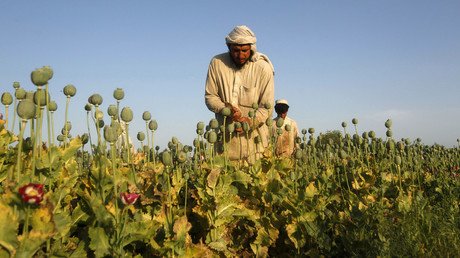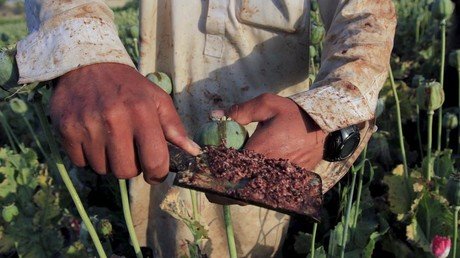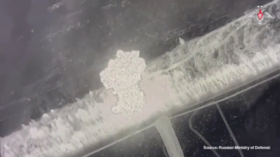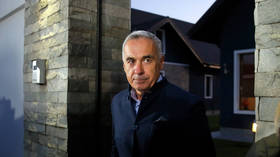‘World fails miserably to stop opium threat’: RT reports from drug factory Afghanistan
Opiate production in Afghanistan has increased markedly since the US-led invasion in 2001, leading addiction rates to skyrocket. Meanwhile, the UN said this week that opioids are the world’s “most harmful drug type.” RT investigated the problem in Kabul.
Though only a tiny fraction of the opiates produced in Afghanistan are used domestically, the effects are devastating the local population. An RT crew found an infamous nest of drug addicts in a dry riverbed right in the middle of the Afghan capital, Kabul,
“Every day, it is getting worse – not better. More people become addicted,” Layla Haidari, the founder of the ‘Mother’ association, which helps drug addicts, told RT, noting “I run two rehab centers – one for men, and one for women. Many of the women are mothers with children. I once treated a four-year-old addict.”
“It’s politics. The ministries, the politicians… authorities want poppy cultivation to continue,” she said.
The UN defines opiates as a “subset of opioids comprising the various products derived from the opium poppy plant, including opium, morphine, and heroin.” Afghan opioids are exported via well-oiled smuggling routes – north, to Russia and Europe; east, to Asia; and west, to the Middle East, Africa, and the Americas.
According to the World Drug Report released on Thursday, in 2016, about $150 million from illicit Afghan opiate trade went into the pockets of terrorist groups operating in the country that the US and local forces have failed to clamp down on. The UN estimates that up to 85 percent of opium poppies are cultivated in Taliban-influenced territory.
The terrorists appear to care little about the negative health effects that the cultivation of poppy seeds has on the global or Afghan population. The UN estimates that around half of the Taliban’s income comes from its involvement with narcotics, and it seems that all layers of society are involved in generating that profit.
READ MORE: Taliban urge supporters to plant trees for ‘rewards in the hereafter’
“I’ve seen Afghan police generals, with my own eyes, colluding with drug smugglers in the south. It is a business of billions and billions of dollars that reaches the pockets of the Taliban and corrupt Afghan officials,” Hekmarullah Azamy, a political analyst, told RT.
In last year alone, net opium poppy cultivation in Afghanistan increased by ten percent compared to 2015, reaching 201,000 hectares in 21 provinces. Meanwhile, the quantity of opium poppies destroyed decreased by 91 percent, UN figures say.
“Only the strengthening of the rule of law, lasting peace, and the provision of alternative sources of income can break the vicious circle of poverty, lack of security, and illicit crop cultivation,” the UN said.
Eradicating production seems an impossible task in a country where over 39 percent of the population lives below the national poverty line, and every penny counts.
“When you go there [to the countryside] in the opium season – you see schools and universities empty because people leave to go work in the opium fields and find employment,” Azamy explained to RT.
“It’s not only the Afghan government that’s failing to fight the opium and narcotics. It’s also the international community that’s failing miserably to fight opium production. Their countermeasures to fight drugs were clearly ineffective,” he added.
In 2015, an investigative team from RT Doc visited Afghanistan to record the life-destroying black-market opium industry. The team talked to police officers, drug users, and opium growers in search of a more comprehensive picture. Watch this film here.















